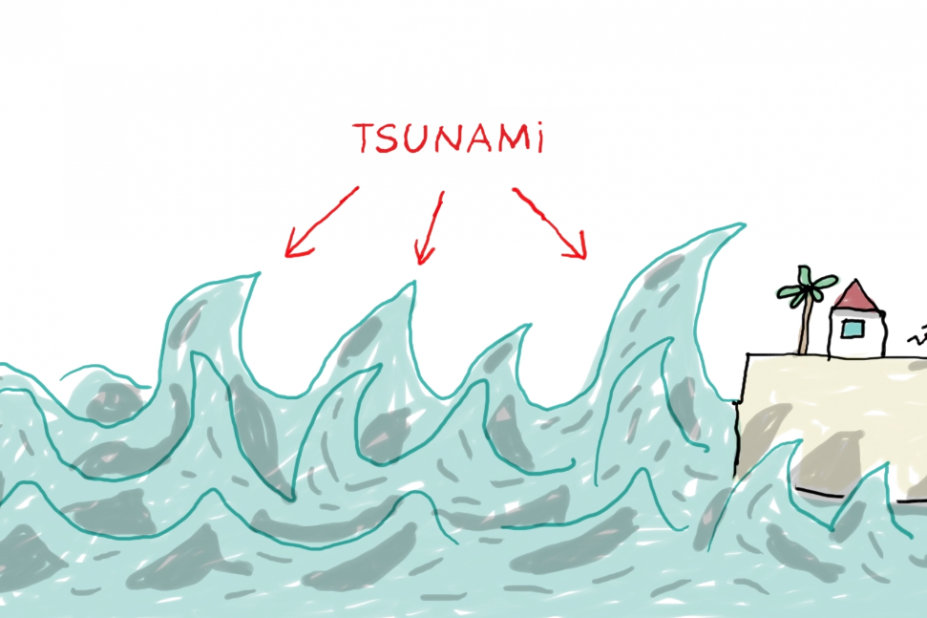A tsunami is a series of gigantic waves that crash down onto the shore.
It is most often triggered by an earthquake under the sea.
It can also be caused by a volcanic eruption or by a landslide in the ocean.
How does a tsunami form?
When the tectonic plates of an ocean or continent hit each other, the ocean bed is deformed and lifts up an enormous mass of water.
Concentric waves are formed, like you when you throw a stone in water.
Out at sea, the waves are no higher than 3 feet but move as fast as a plane.
When they get near the coast, they are slowed down by the lack of depth. So they contract and get bigger.
30 to 90 foot high walls of water crash onto the coast, destroying everything in their path and flooding the land.
The damage is tremendous. In the weeks that follow, there is no drinking water, no electricity, and no crops because salt water has invaded everything.
Some countries that are often hit like Japan are equipped with tsunami warning systems. But poorer countries don’t have them.
It is however possible to know when a tsunami is about to hit the coast. How? The sea goes back quickly and suddenly.
People only have a few minutes to take refuge on a hill or on top of a strong building before the waves arrive.





 Retour
Retour